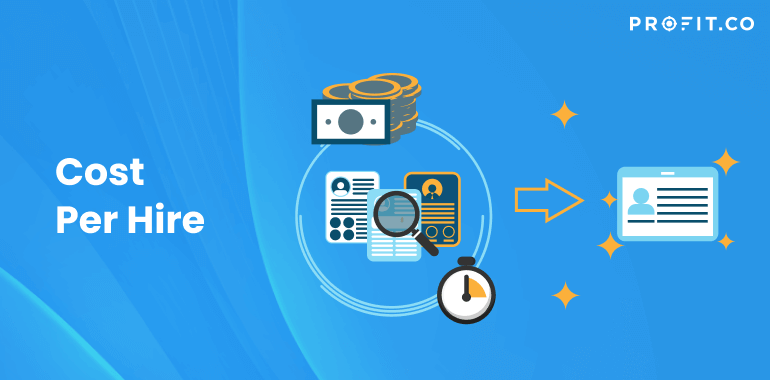Cost per hire refers to the amount of money your company spends to hire recruiting talent. The total cost spent to recruit a talent covers the overall cost of welcoming the new employee to the company that includes the expense of the complete recruitment process, cost of travel and benefits.
On its own, this figure doesn’t tell you much. However, when viewed alongside the total recruiting budget, it can become incredibly useful. For example, it can help you determine how many employees your company can afford to hire in a year.
The Cost per Hire Formula
When calculating the cost per hire, you first have to decide on the time period you’d like to draw data from: the last quarter, the last year, or even the last decade, depending on the maturity of your company. Once you have your timeframe, you then sum up the internal and external recruiting costs accrued. Then, you divide this number by the total number of hires in the given time period.
This seems simple enough, right? But what exactly are internal and external recruiting costs? Let’s take a closer look:
- Internal Recruiting Costs – these refer to the internal expenses and organizational costs of your company; these can include the money you spend on the referral program and the salaries of your recruiters. It’s important to accurately calculate these expenses using tools like an employee cost calculator.
- External Recruiting Costs – as the name suggests, these costs refer to everything that your company pays outside when it comes to recruiting; these can include costs towards background checking services, agency fees, job board fees, advertising, and more.
What is a “normal” cost per hire?
According to a study conducted by the Society of Human Resource Management, the average cost per hire is just a little over $4,000.
Naturally, we can’t use this cost per hire average for all the companies – there are certain factors that influence the cost per hire. For example, the hiring volume is quite important. Additionally, when the number of people hired increases, the cost per hire necessarily decreases– this is due to the hiring costs that remain fixed for an extended period of time, such as recruiter salary.
Additionally, the cost per hire also depends on the industry. For example, in IT, the time it takes to fill an open position is much lower– therefore, the cost per hire of an IT company will be much lower.
Alternatively, when it comes to engineering, open roles take longer to fill. The cost per higher necessarily increases, as a company will most likely take more time to look for candidates and rigorously interview them.
Cost per higher is heavily influenced by the number of people searching for jobs, the types of interviews a company wants to conduct, the industry the job is in, and many more factors that makes the SHRM average given above true for some companies, but in no way a target cost.
The Bottom Line
While adding up all of the costs that are associated with hiring new talent, it can ultimately be a very beneficial figure for companies to know. This can help determine the recruiting budget, set reasonable goals and expectations for onboarding new employees, and also be the first step in either increasing or decreasing the amount of money you spend seeking new talent.
Profit.co’s OKR software provides an intuitive interface to define your OKRs and comes with 300+ predefined KPIs such as cost per hire, to make OKR adoption easy.
